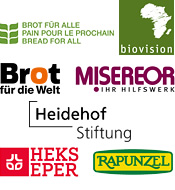News
07.05.2018 | permalink
Soil pollution affects food security and human health, FAO report

Soil pollution presents a serious threat to agricultural productivity, food safety, and human health, according to a new report. It was released by the UN Food and Agriculture Organisation (FAO) on May 2. Industrialisation, war, mining and the intensification of agriculture have taken a heavy toll on soils worldwide, while the growth of cities meant that soil has increasingly been used as a sink for large amounts of municipal waste, the report warns. “Soil pollution affects the food we eat, the water we drink, the air we breathe, and the health of our ecosystems,” said FAO Deputy Director-General Maria Helena Semedo in a press release. The authors of “Soil Pollution: A Hidden Reality” stress that far too little is known about the scale and severity of soil pollution, which they define as “the presence in the soil of a chemical or substance out of place and/or present at a higher than normal concentration that has adverse effects on any non-targeted organism.” Their analysis of existing scientific literature shows that studies conducted so far have largely been limited to developed economies, meaning that massive information gaps exist regarding the full extent of the problem. However, the little we do know is enough cause for concern.
The report presents facts and figures to illustrate the global pressures on soil. In Australia, for example, some 80,000 sites are now estimated to suffer from soil contamination. China has categorised 16% of all its soils and 19% of its agricultural soils as polluted. In addition, there are around 3 million potentially polluted sites in the European Economic Area and the West Balkans. In the United States, 1,300 sites appear on a national list of pollution hot spots. Most soil pollution is caused by human activities. “The main anthropogenic sources of soil pollution are the chemicals used in or produced as by-products of industrial activities, domestic, livestock and municipal wastes (including wastewater), agrochemicals, and petroleum-derived products,” the report reads. “These chemicals are released to the environment accidentally, for example from oil spills or leaching from landfills, or intentionally, as is the case with the use of fertilisers and pesticides, irrigation with untreated wastewater, or land application of sewage sludge.” But soil pollution also results from atmospheric deposition from smelting, transportation, spray drift from pesticide applications and incomplete combustion of many substances.
With regard to agricultural sources, the authors write that excessive application of fertilisers and manure or inefficient use of the main nutrients – nitrogen (N) and phosphorus (P) – in fertilisers are the main contributors to soil pollution: “Excessive fertiliser usage can lead to soil salinity, heavy metal accumulation, water eutrophication and accumulation of nitrate. The fertiliser industry is also considered to be a source of heavy metals.” The report states that manure from livestock, despite its potential benefit for agriculture, can contain high amounts of heavy metals, pathogen organisms and antibiotics, which may lead to antimicrobial‑resistant bacteria proliferation in soils amended with such manure. Global manure production from all livestock has increased by 66%, from 73 to 124 million tonnes of N, from 1961 to 2016, with manure applied to soils increasing from 18 to 28 million tonnes of N, and N input from manure left on pasture increasing from 48 to 86 million tonnes of N.
Another problem is the use of pesticides. FAO says that pesticide use in some low and middle income countries has grown over the last decade. Bangladesh, for example, has increased its use by four times, while Rwanda and Ethiopia have increased theirs by over six times and the Sudan even by ten times. A problem arises when pesticides are misused: when they are applied in higher amounts than needed and using practices that contribute to their spreading into the environment, such as spraying with unsuitable application equipment or by planes into vast regions, affecting people and non-target organisms, the authors explain. Soil pollution has bad consequences: It impacts food security both by impairing plant metabolism and thus reducing crop yields, as well as by making crops unsafe for consumption by animals and humans. Pollutants also directly harm soil microorganisms and larger soil-dwelling organisms and hence affect soil biodiversity and fertility.
“The potential of soils to cope with pollution is limited; the prevention of soil pollution should be a top priority worldwide,” said Maria Helena Semedo. FAO recommends that national governments implement regulations on soil pollution and limit the accumulation of contaminants beyond established levels in order to guarantee human wellbeing, a healthy environment and safe food. The organisation also urges governments to facilitate remediation of contaminated soils that exceed safe levels. According to the authors, it is also essential to limit pollution from agricultural sources by implementing sustainable soil management practices worldwide. (ab)

